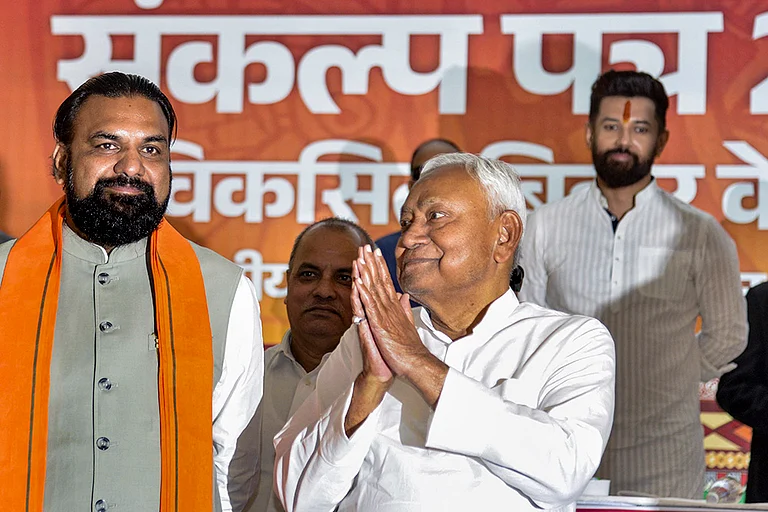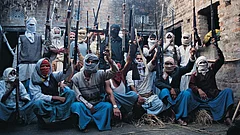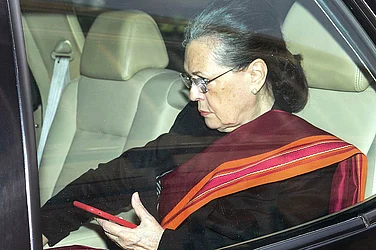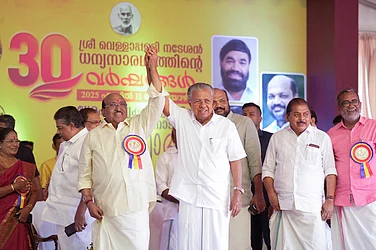It is too early to write an epitaph for Nitish Kumar’s electoral career: after five years, the jury is still out on his 2020 “last election” comment. One thing is clear, however: most of the first-time voters in the upcoming polls would have been born during his reign. Others sometimes wonder though if the “sushasan babu” (Mr. Good Governance) of yesteryear is the same man as today’s “paltu chacha” (Uncle Turncoat).
Nitish Kumar assumed office in one of Bihar’s lowest points in history: following an era of what The Economist termed “chronic misrule that has allowed infrastructure to crumble, the education and health systems to collapse, and law and order to evaporate…” His reversal of that trajectory has cemented forever his sushasan aura: head and shoulders above the competition.
His first term distanced the administration from a mafia-politician nexus and halted an economic rout. From 1985 to 2005, Bihar’s per capita income, as a fraction of the national average, had nosedived from 60 per cent to 26 per cent. Today, it hovers around 30 per cent.
A decade and a half since then, however, all this seems like the miasma of a half-forgotten dream. Four somersaults later, it is the wily politician in Nitish that has eclipsed the gritty administrator.
What has changed? Mighty little, actually, I dare say.
“Circumstances don’t make a man,” the Greek stoic philosopher Epictetus held, “they only reveal him…”. In Nitish’s case, the germs of what followed were all there in his wildly successful first term.
Let us first take Nitish, the sushasan wizard. In his first term, Bihar’s GDP growth outpaced India’s by 50 per cent after lagging by the same margin in the preceding five years. This scorching growth was too good to last. Nitish’s sorting of the administrative mess inherited and pushing his bureaucracy hard to deliver proved magical.
But once things fell in relative order, the system had to settle down to its structural steady-state, which no chief minister (CM) can change overnight. To add to this, coalition dharma hamstrung him progressively since 2015. Hardly a surprise, then, that there has been no encore of his first-term magic: you cannot clean a dirty stable twice.
The way the change in Bihar has been pushed through—with the back-breaking slog of the CM and his select team of bureaucrats—is hardly a pace that can continue forever. Things have to return to a more normal pace.
Which brings us to Nitish, the politician. When he stormed back to power in 2010, the English press happily declared the “end of caste politics” and the “mandate for development”. And yet, a closer look at his 2010 election strategy reveals a nuanced reality.
Even the Bahubalis (mafia dons/criminal politicians) returned to the limelight, including those in prison. Rajput don Anand Mohan began figuring in the news again, as Nitish himself visited the former’s village home in Saharsa.
Pradeep Mahto, an independent MLA from Warisaliganj, shared a dais with Nitish while having a pending warrant against him in a case that included a murder charge. In another much-criticised move, Nitish inducted former Rashtriya Janata Dal (RJD) strongman Mohammed Taslimuddin—reputed to have considerable influence in Kishanganj and neighbouring districts in Muslim-dominated eastern Bihar—into the Janata Dal-United JD(U) and gave a ticket to his son.
Clearly, the rules were different during election time.
In the final list of candidates, 36 per cent of those in the fray had criminal records and 21 per cent had serious criminal charges against them. None of the parties was clean, with the National Democratic Alliance (NDA) actually being the worst. The Bharatiya Janata Party’s (BJP) candidates had the worst statistics among the major parties—65 per cent and 28 per cent, respectively. The JD(U) came next with 54 per cent and 38 per cent.
Caste arithmetic had not gone anywhere either. The constituency-wise candidate list of each party reflected the dominant caste configurations of the respective areas. The idea was that only after the basic caste loyalties had been accounted for could any other factor (like development and governance) have a marginal impact.
The only difference was in the rhetoric. Nitish—the star campaigner for the NDA—spoke almost exclusively about development and the contrast of his administration from that of his predecessor. In this one aspect, the NDA’s electoral strategy was development-oriented.
Nitish’s sushasan had never come at the cost of realpolitik. Politics sustains governance. Nitish’s genius lay in balancing the two, seamlessly trading the administrator’s hat for that of the politician.
An anecdote from the 2010 campaign may help explain the shape of things to come.
The BJP’s national executive met in Patna on June 12 and 13, marking Narendra Modi’s first visit to Bihar during the NDA regime. On the morning of the meet, newspapers in Bihar carried a full-page advertisement, ostensibly highlighting the friendship between two states—Gujarat and Bihar—with a photograph of Nitish and Modi together.
It also spoke about Gujarat’s gift of Rs 5 crore towards the Kosi flood relief in 2008. The advertisement was supposedly put out by a group of Biharis in Gujarat, though later it appeared that a BJP MLA from Surat was responsible for it.
Nitish was furious at the advertisement and initiated police action against Expression, the advertising agency responsible for it, claiming that his photo had been used without his permission. He also cancelled a dinner he was hosting in honour of the visiting BJP leaders. Modi, in turn, praised the Bihar government’s work in his speeches without mentioning Nitish.
As the Rs 5 crore support for Kosi relief was discussed, Nitish took the unusual step of returning the funds to Gujarat, creating further controversy. The fracas had by now snowballed into something that seemed to threaten the more than a decade-old partnership between the JD(U) and the BJP and there was briefly even some talk of the JD(U) aligning with the Congress.
Three years later, Nitish walked away from the 17-year-old alliance. The reason: Modi’s selection as the NDA’s prime ministerial candidate. Personal ambition or a shout-out for secularism? Take your pick.
The 2014 Lok Sabha tsunami drenched Nitish, forcing a year-long exile, returning just in time for the assembly polls. He was re-elected in 2015, but with compromised hegemony. Tejashwi Yadav of the RJD became deputy CM.
The second switch came in 2017, ostensibly over CBI charges against Tejashwi. Was this distancing from corruption or freeing himself from the tightening RJD squeeze? Again, anybody’s guess.
2020 saw further clipping of Nitish’s wings with Modi’s “Hanuman” queering the JD(U) tally under the watchful eyes of a sleepless Lakshman in Amit Shah.
Nitish’s second parting in 2022 needed no ideological justification: he had just blocked an abundantly clear Modi-Shah gameplan (and an Uddhav Thackeray fate for himself). He needed to make clear that he was nobody’s prodigal child. His return to the fold 16 months later evoked more of a yawn than a shock. The details of the backroom deal remain hidden from public view.
“Some men change their party for the sake of their principles;” Winston Churchill had observed, “others their principles for the sake of their party”. The measure of a politician’s integrity cannot be in the constancy of his company, it can only be to the adherence to values in public life.
Seen through this prism, Nitish has been admirably consistent through his many switches. He has steered clear of the dual taints of corruption and communalism, regardless of his bedfellows. Whether it is a mask or the face is a moot question: for a politician there is little difference.
Like his caste, Nitish’s own party is too small to prop him up in power by itself. He is condemned to riding one of the two tigers: both equally ready to finish him off at the first chance. As long as the RJD and the BJP are too big to unite, and too small to get a majority on their own, the JD(U) can continue to play both king and kingmaker, periodically switching loyalties to avoid being taken for granted.
But that has its costs. Embracing yesterday’s adversary takes its toll on credibility and party morale.
What lies ahead? While Nitish’s personal brand still remains strong, the electorate is showing signs of tiring and a desire for a generational shift. If three contenders are not crowd enough, Chirag Paswan’s Lok Janshakti Party (Ram Vilas) (LJP (RV)) remains the JD(U)’s counterweight to the BJP. The Dalit vote counts. In 2005, Nitish had come to power owing to a fallout between the (LJP (RV)) and the RJD. The son can just as well cause his undoing.
Throw into the mix Prashant Kishor, now joined by Nitish’s one-time Man Friday, R. C. P. Singh: likely a bigger irritant for Nitish than for other parties.
While Nitish risks losing his flock at every sharp turn, the JD(U) sans Nitish boggles the imagination. Enter, therefore, the reclusive Nishant Kumar, his son. In an essentially Indian twist, his inexperience, as much as his heredity, makes him the best heir to his father’s legacy. Or his best proxy. But no succession is without heartburn, and outside options are not exactly lacking for JD(U) dissenters.
Political careers are said to end only in death or defeat. Can Nitish craft an exception? The months ahead promise nothing short of a Prakash Jha thriller. Popcorn, anyone?
(Views expressed are personal)
MORE FROM THIS ISSUE
In Jungle Raj, Outlook’s August 1 issue, we explored why the Bihar elections matter so much. Our reporters delved into the state’s caste equations, governance records, electoral controversies and national ambitions, along with taking a hard look at the law and order situation— all of which make the 2025 Bihar Assembly elections one of the most consequential state polls of this electoral cycle. The article appeared as 'Paltu Chacha’s ‘Last’ Battle?'
Rajesh Chakrabarti is Dean at Shiv Nadar University and author of Bihar Breakthrough: The Turnaround Of A Beleaguered State

































